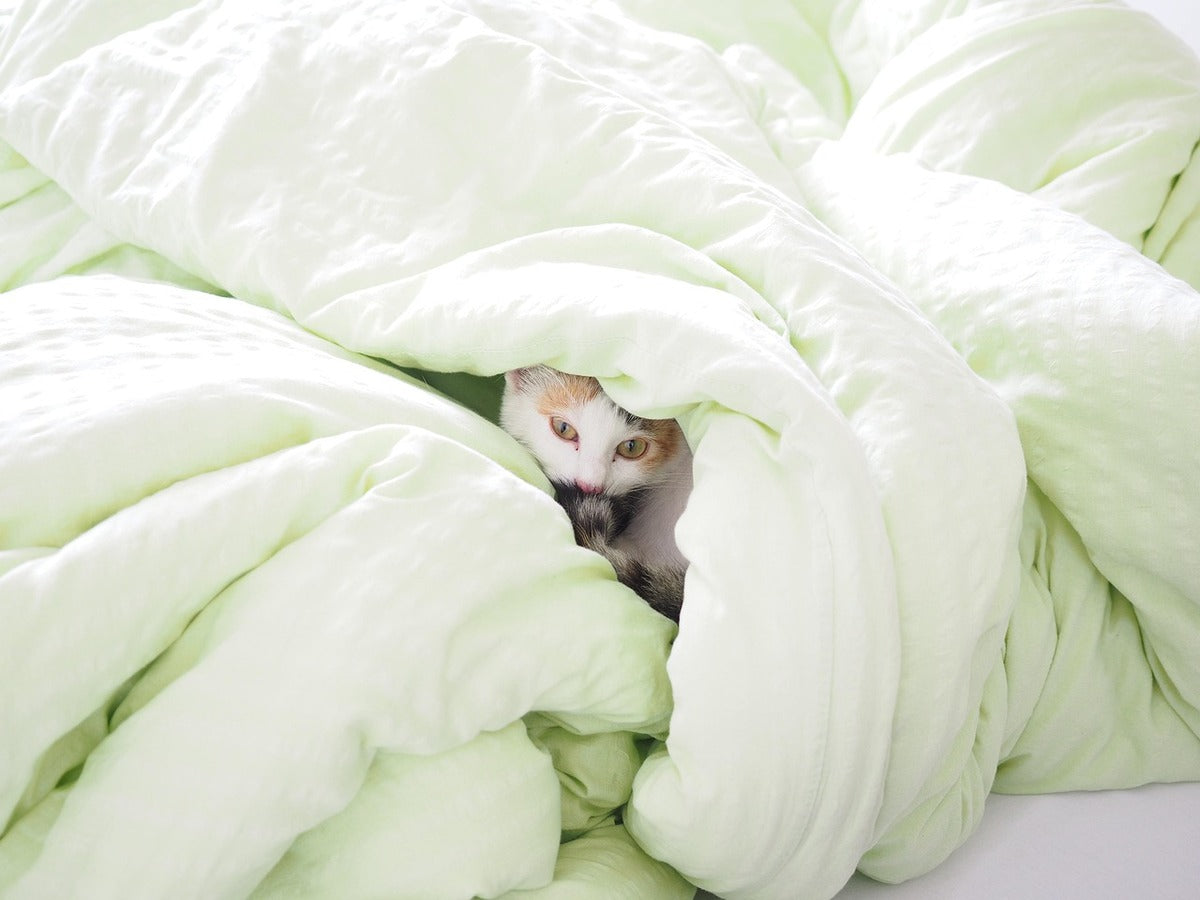
How to Wash a Duvet: Simple Tips for Clean and Fresh Bedding
|
Time to read 4 min
This store requires javascript to be enabled for some features to work correctly.
Written by: Editorial Team
|
Time to read 4 min
Cleaning your duvet may seem like a huge undertaking, but with good care and an understanding of how to clean them effectively, it needn't be a hassle. Here's everything you need to know about washing and caring for your duvet
In general, cleaning experts recommend cleaning your duvet once per year, so long as you keep it clean and use a duvet cover. However, as Good Housekeeping recommends, if you use the same duvet all year round rather than a summer and a winter duvet, you should wash your duvet every 3-4 months.
If your're an allergy sufferer and your bedding has a lot of contact with potential allergens like dust, pet hair, and dirt, you should wash your duvet slightly more often. The same goes if you have any history of bed bugs affecting your bedding or furniture.
Although your duvet does not need to be washed as often as your other bedding, as stated above, there are some giveaway signs that you need to wash your duvet as soon as you can:
Washing, however, can't always save a duvet, as they typically only have a lifespan of two to five years - more to the latter if they are well taken care of. Consider purchasing a new duvet if the following occurs:
The main two ways of washing a duvet are either by hand-washing or using a washing machine. Generally, if you need to get rid of allergens and germs, machine washing at a high temperature is the best way to kill bacteria. However, duvets made from more delicate, natural materials, such as a wool duvet, should probably be hand-washed. Hand-washing is more ideal for spot-cleaning if you don't want to overwash your bedding. Always refer to the cleaning instructions on the label before beginning to wash your duvet.
For spot-washing specific stains on the duvet, blot the stain with a clean cloth using a stain remover or gentle soap solution, then allow the area to dry before further cleaning if necessary. Do not rub vigorously, as this can damage the material.
Your duvet should be cleaned at least once a year, or three to four times a year if you use the same duvet all year round.
Duvets should be replaced at least every five years, or when the damage becomes irreparable.
Duvets should generally be machine washed, but hand washed if made from delicate material or spot-washing. Always refer to the washing instructions attached to the label.
60 degrees celsius is the ideal temperature for machine washing, as it is hot enough to kill bacteria without shrinking the duvet. However, always check the label for specific instructions.
Anywhere between two and five years, depending on the material, quality, and care of the owner.
The Myza Editorial Team
The Myza Editorial Team works together to create and curate The Sleep Journal, a series of blog posts designed to help our customers with frequently asked questions and curiosities regarding everything in the world of sleep, from sleeping positions to skin and hair care. We also provide regular shopping guides, interviews, and reviews to provide insight into our hand-picked brand collaborations and the benefits they have to offer.
Receive 10% off your first order when you subscribe to our newsletter




